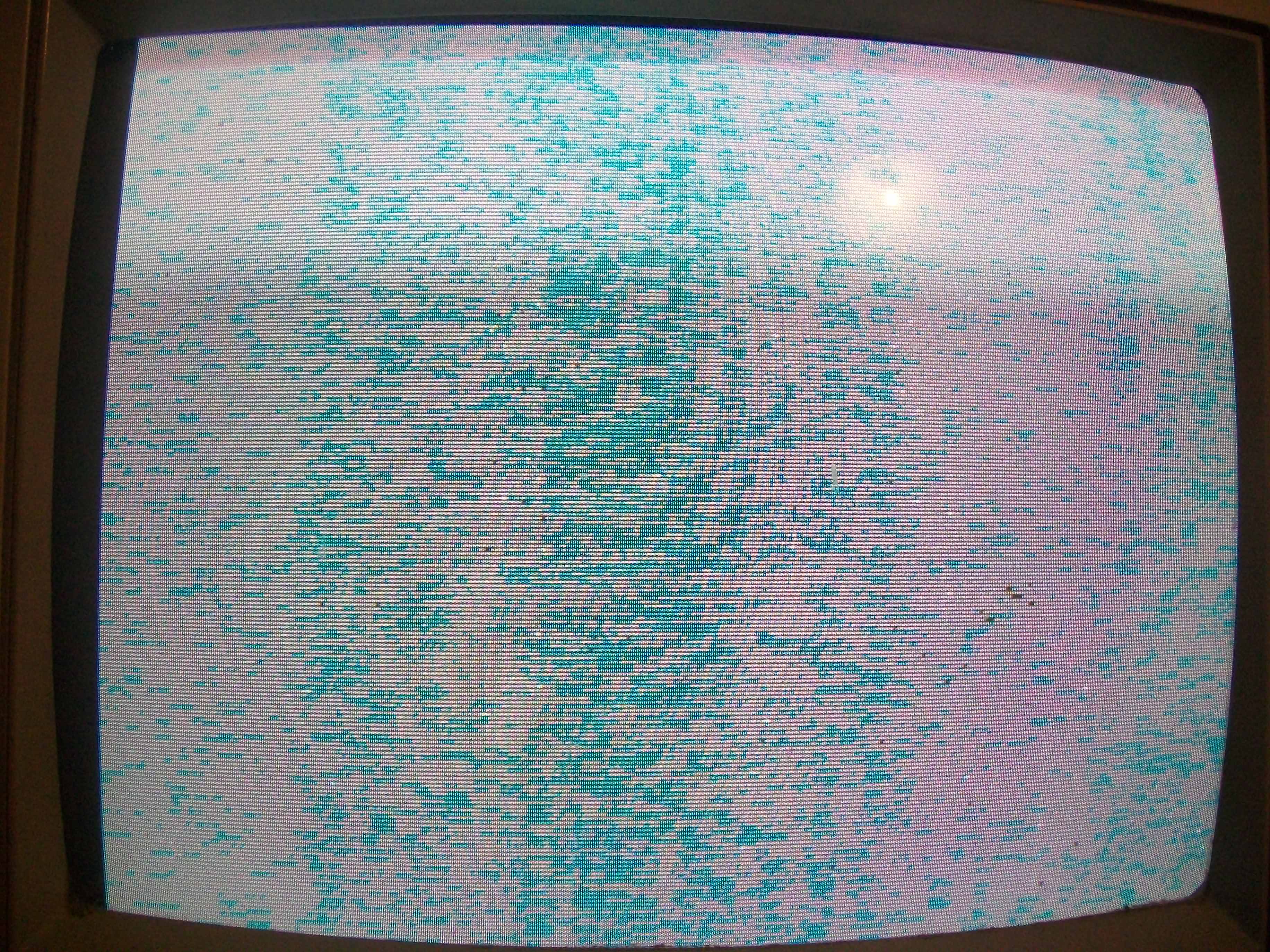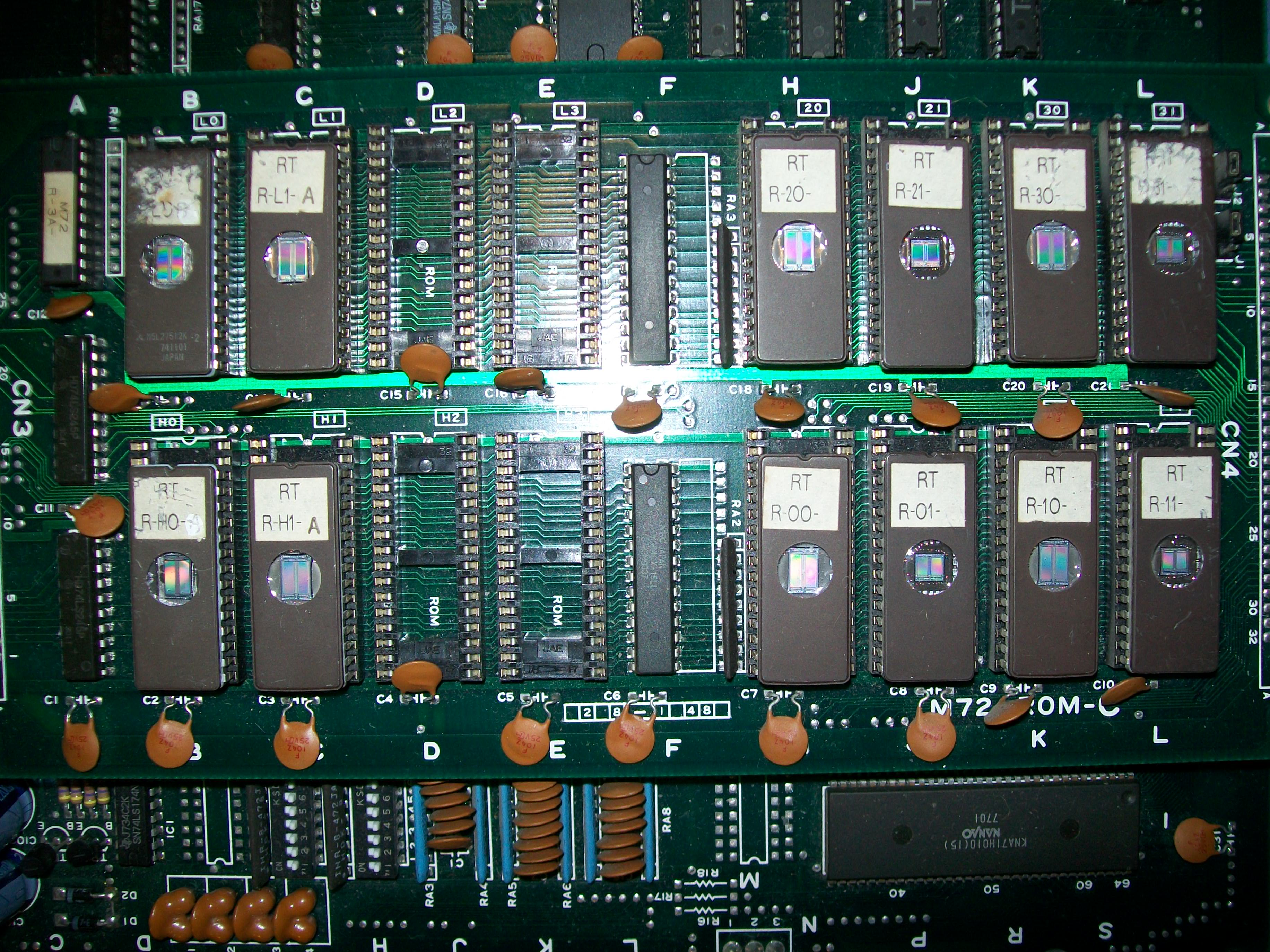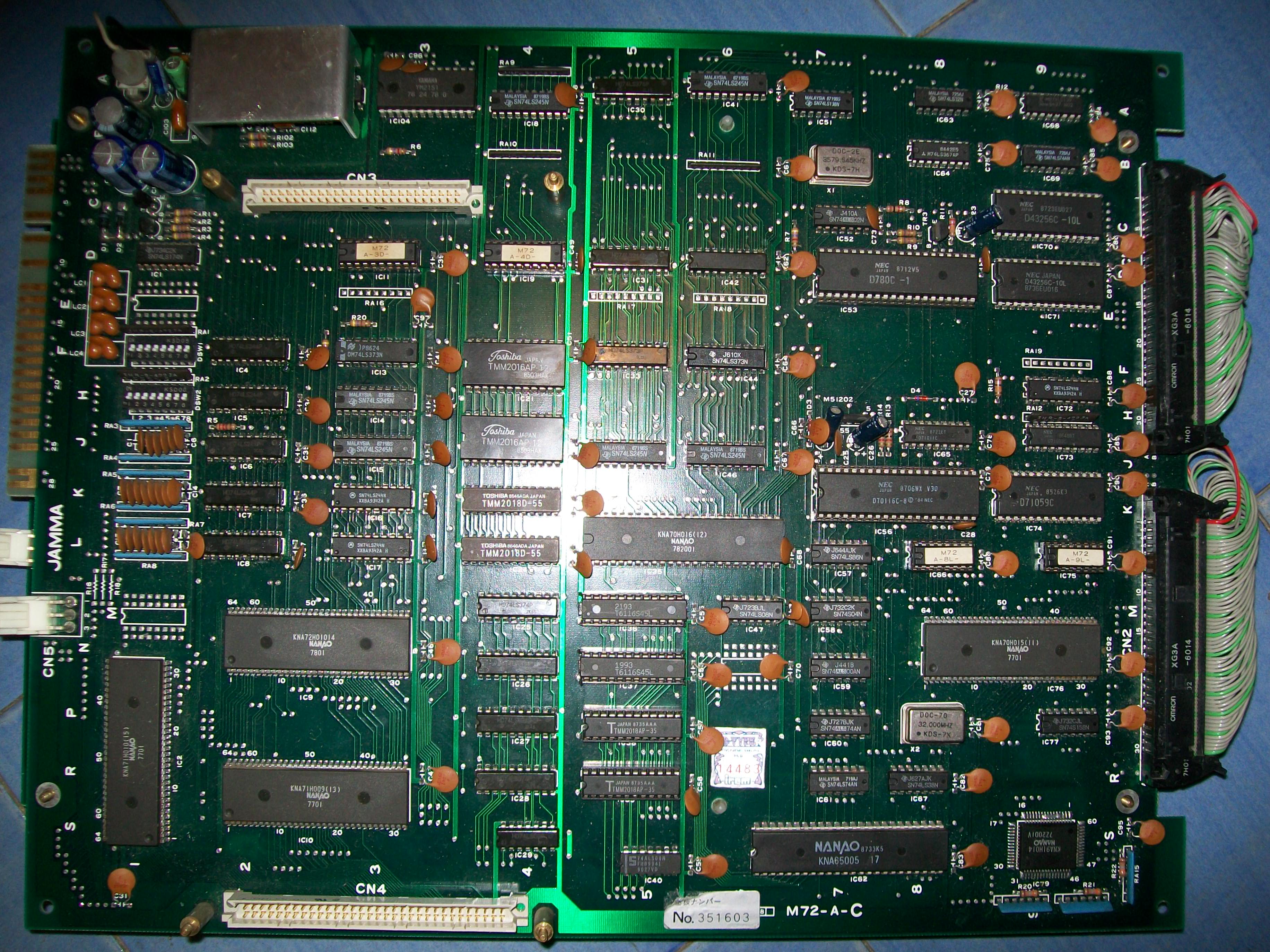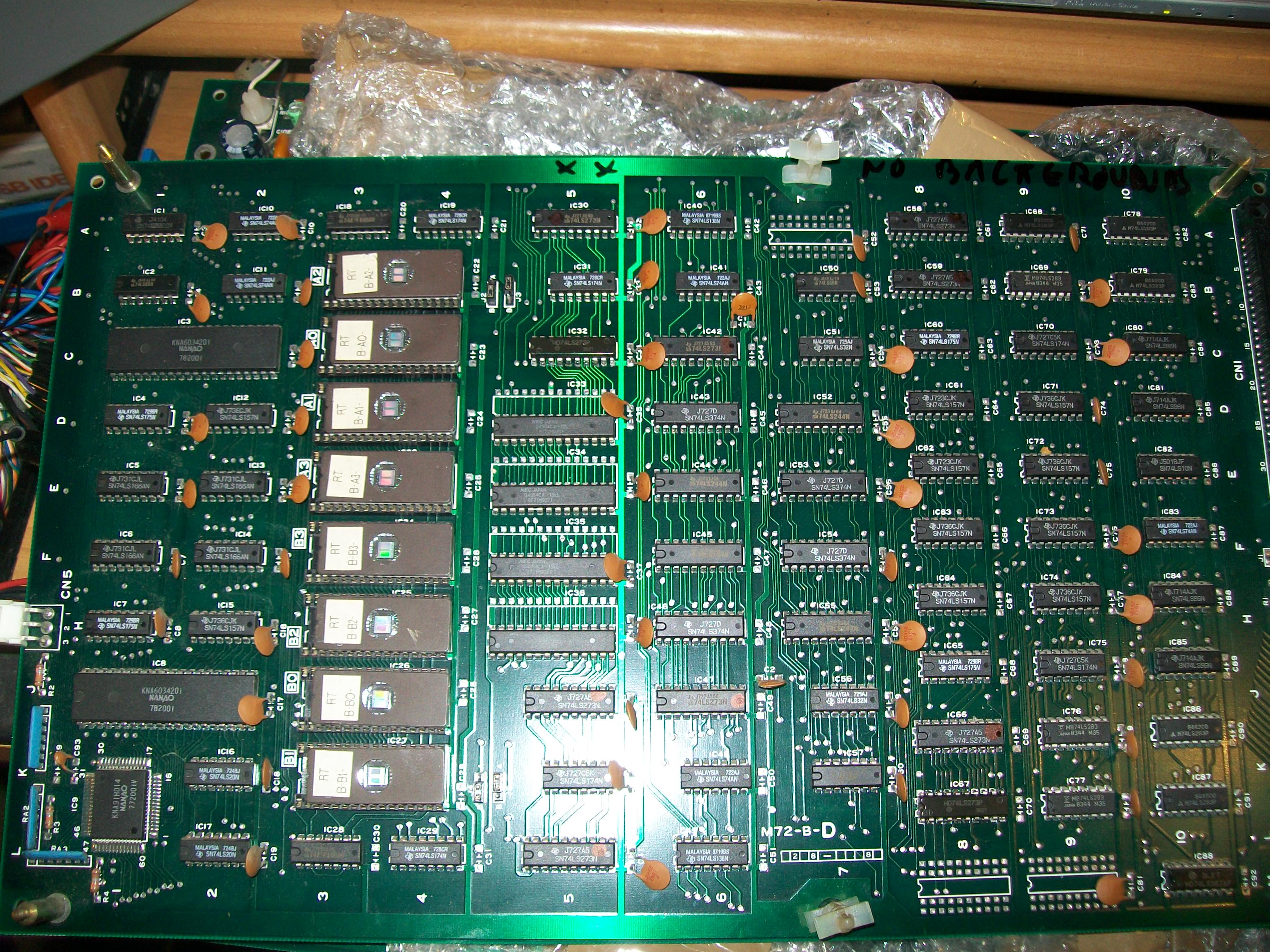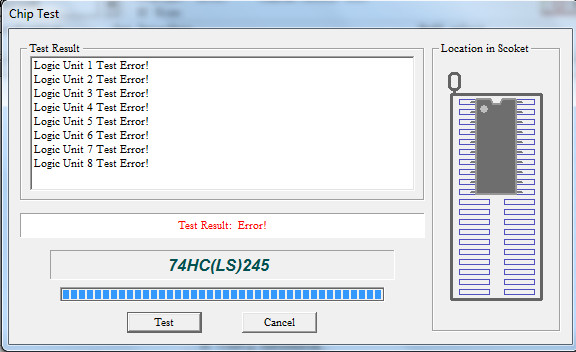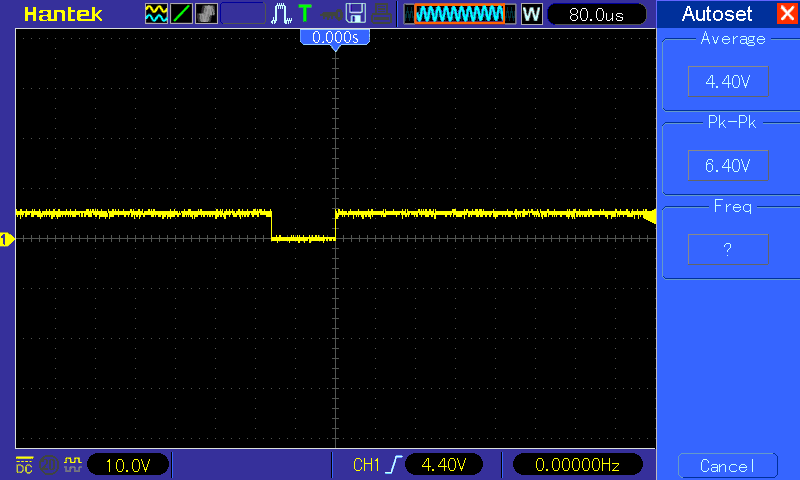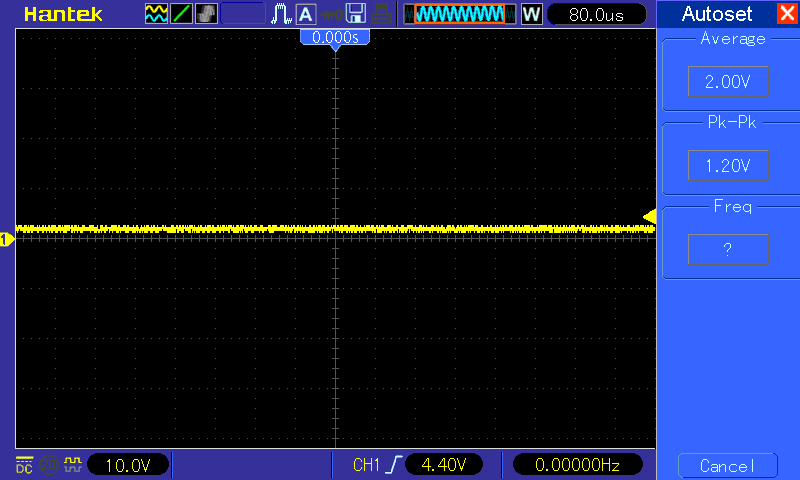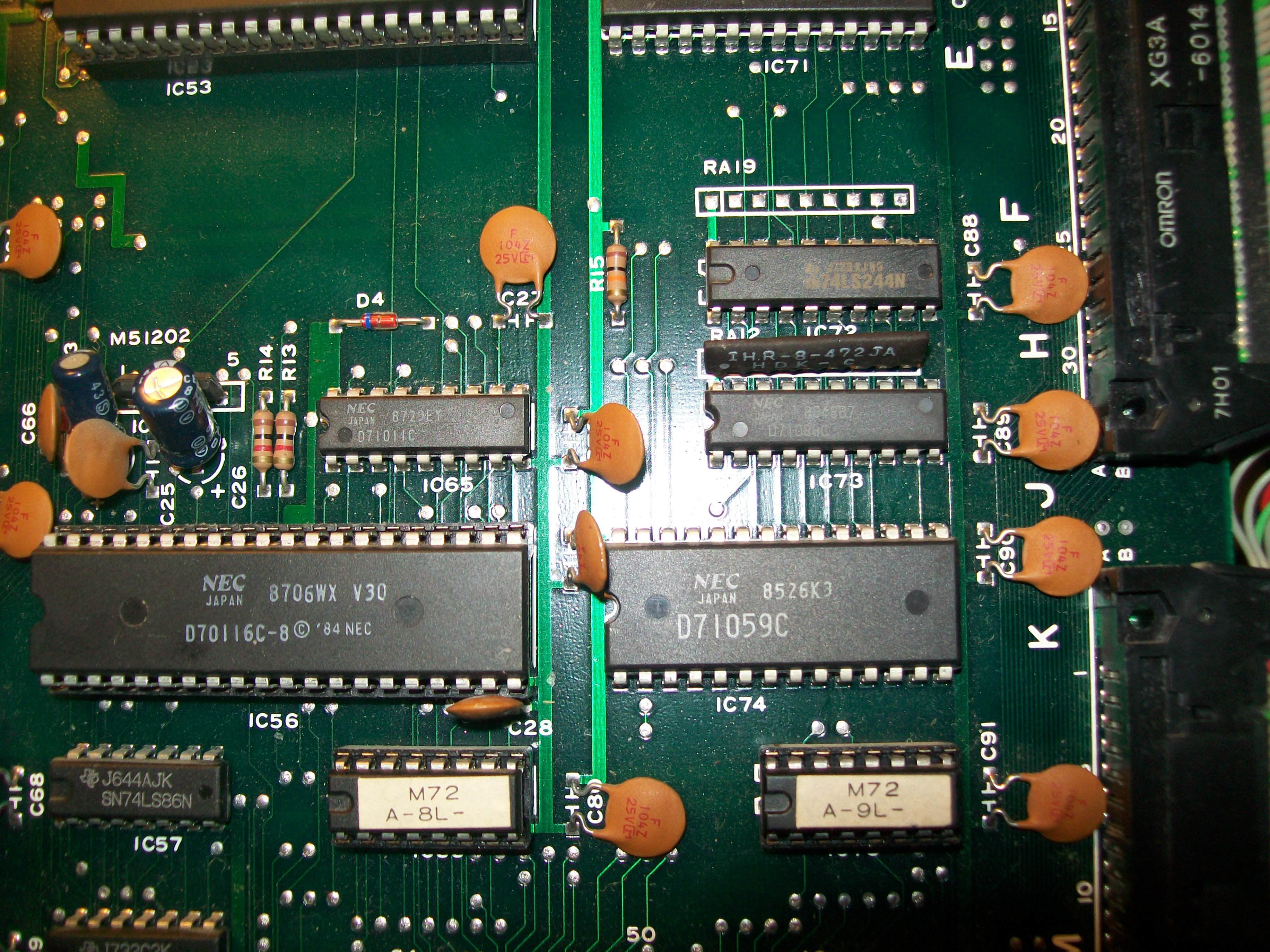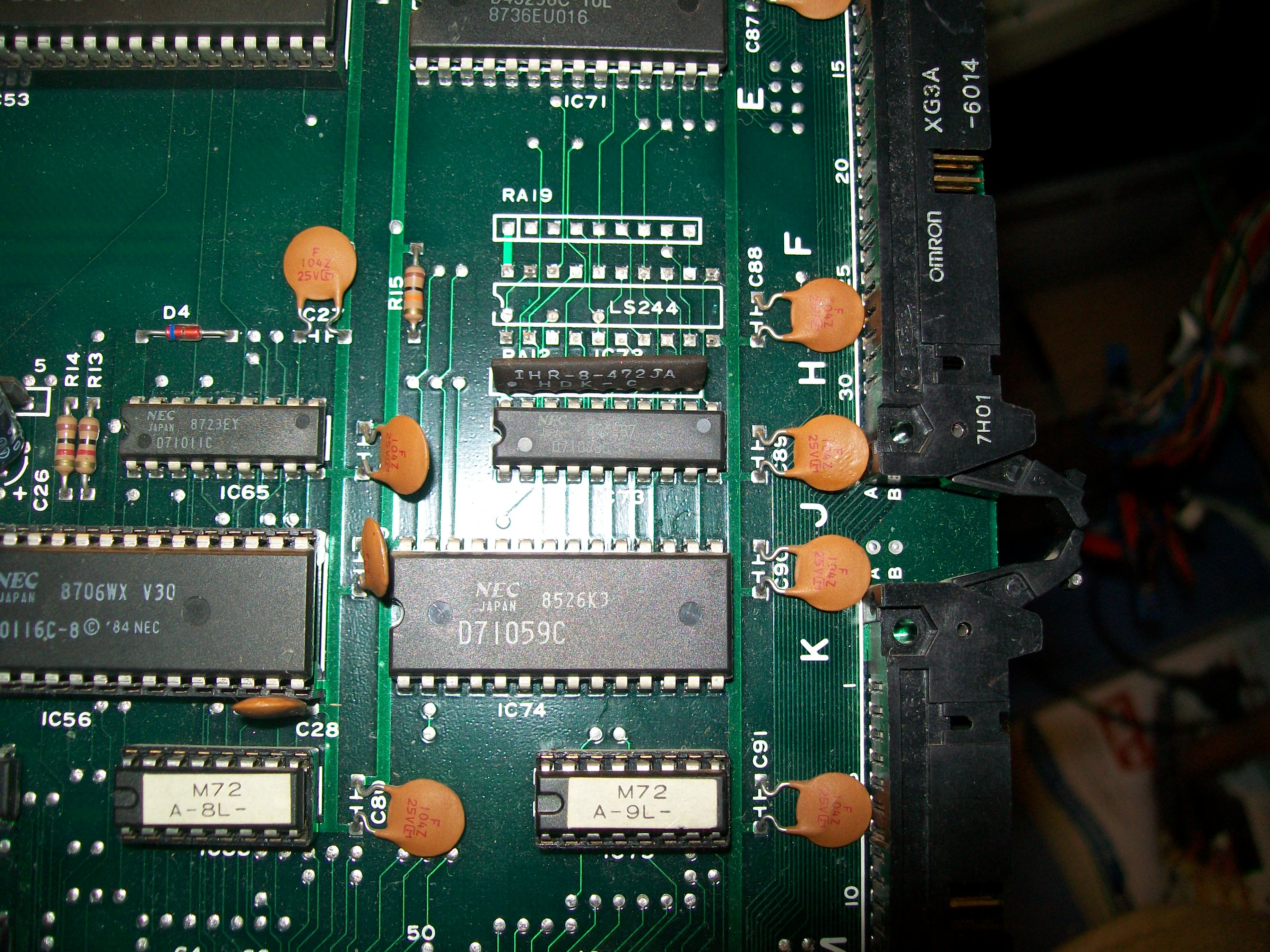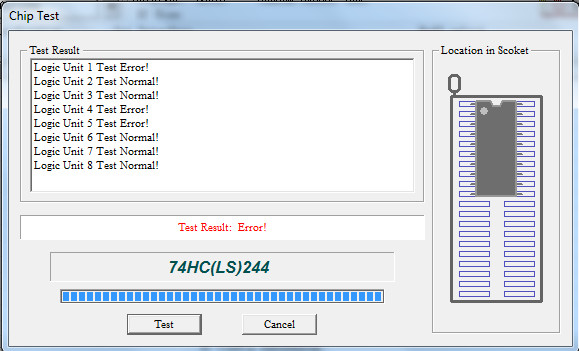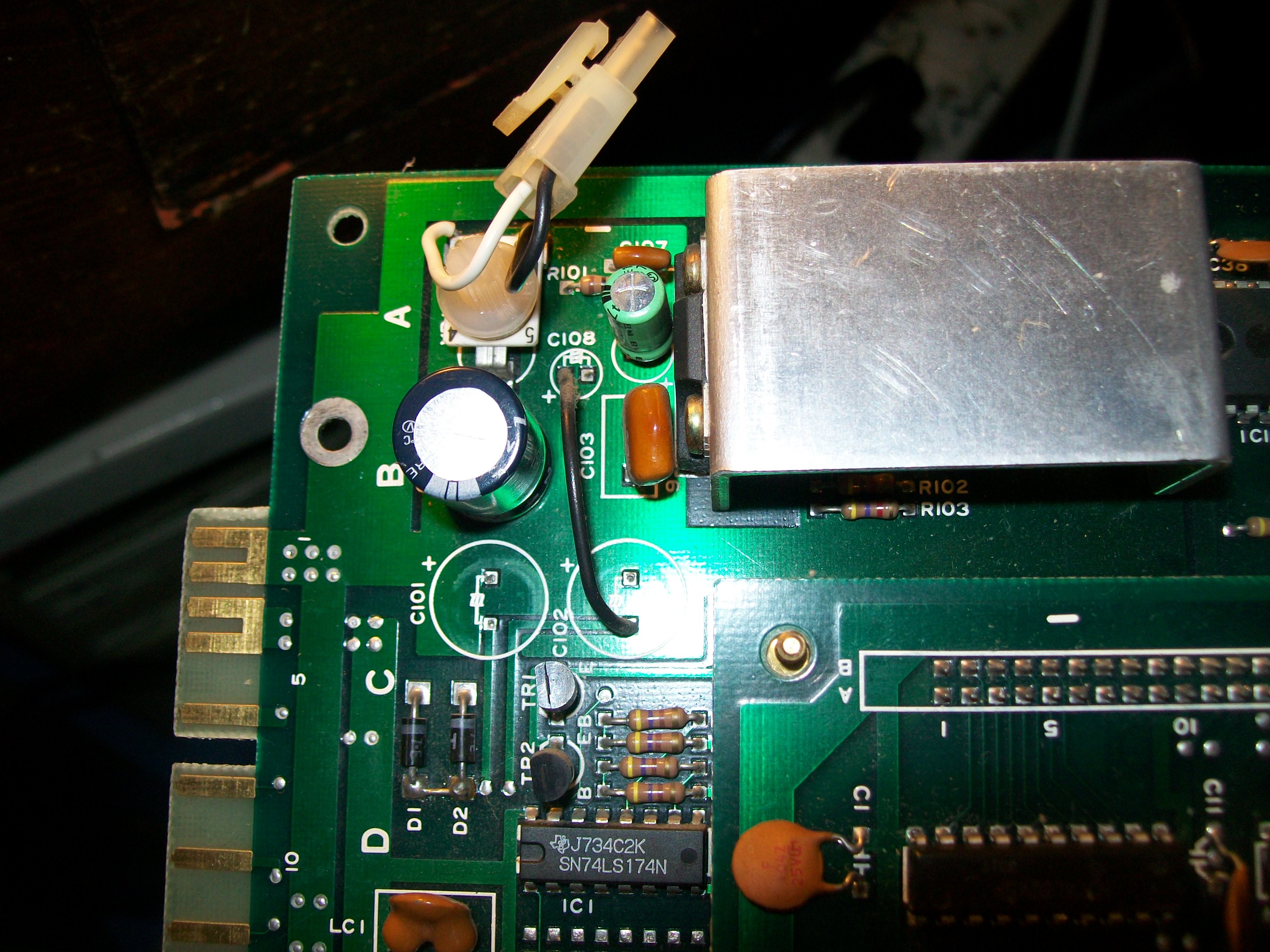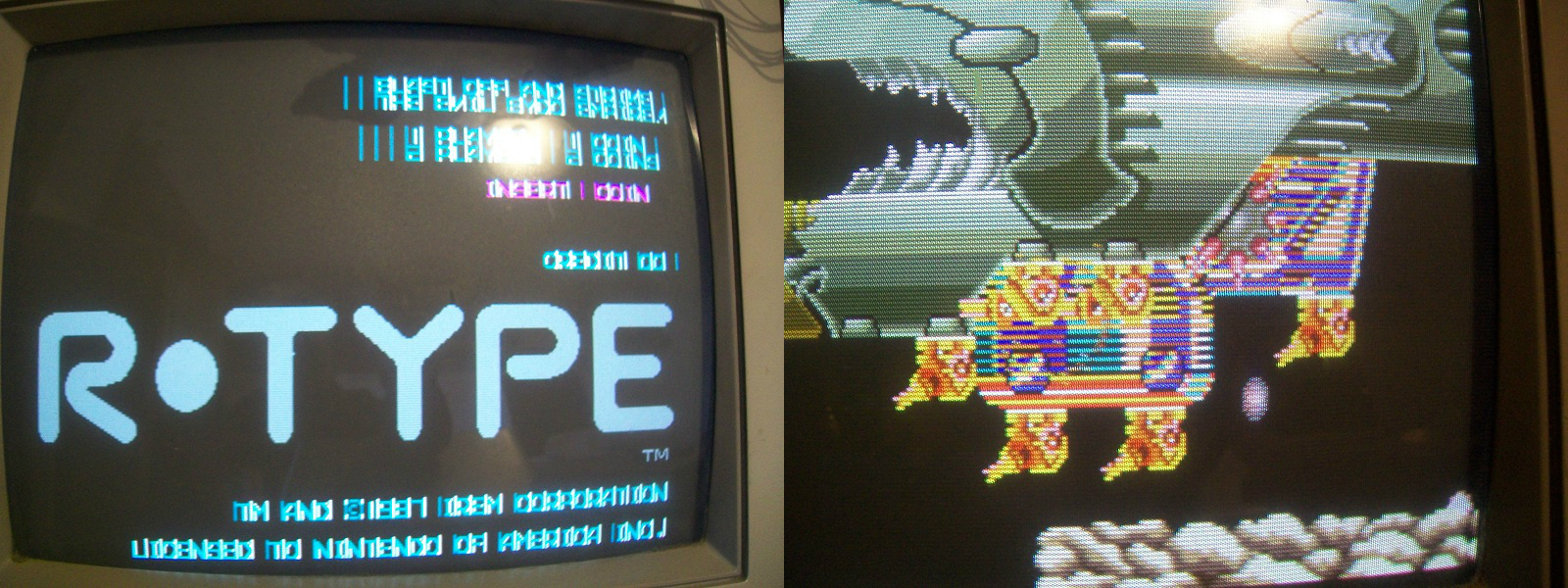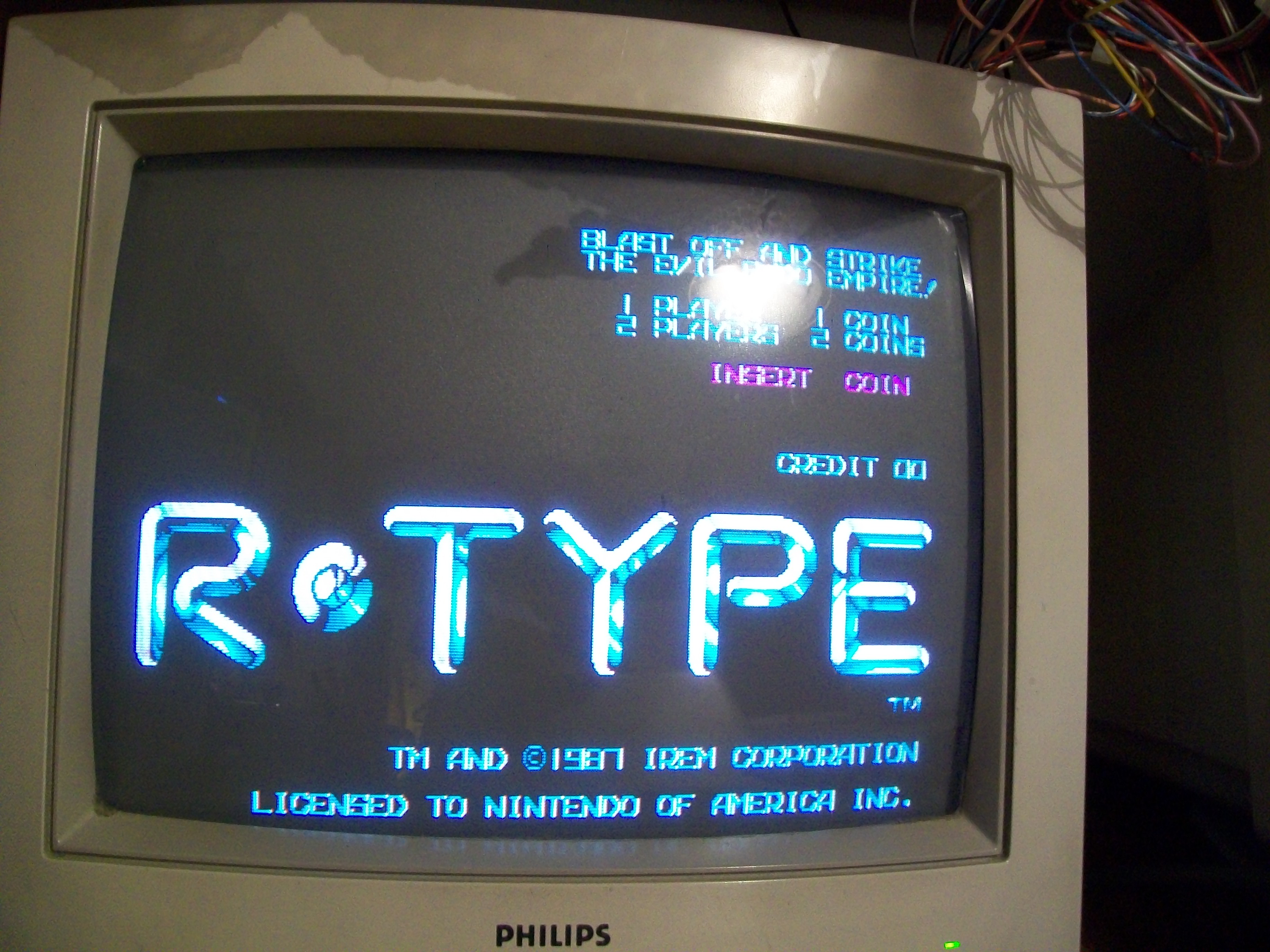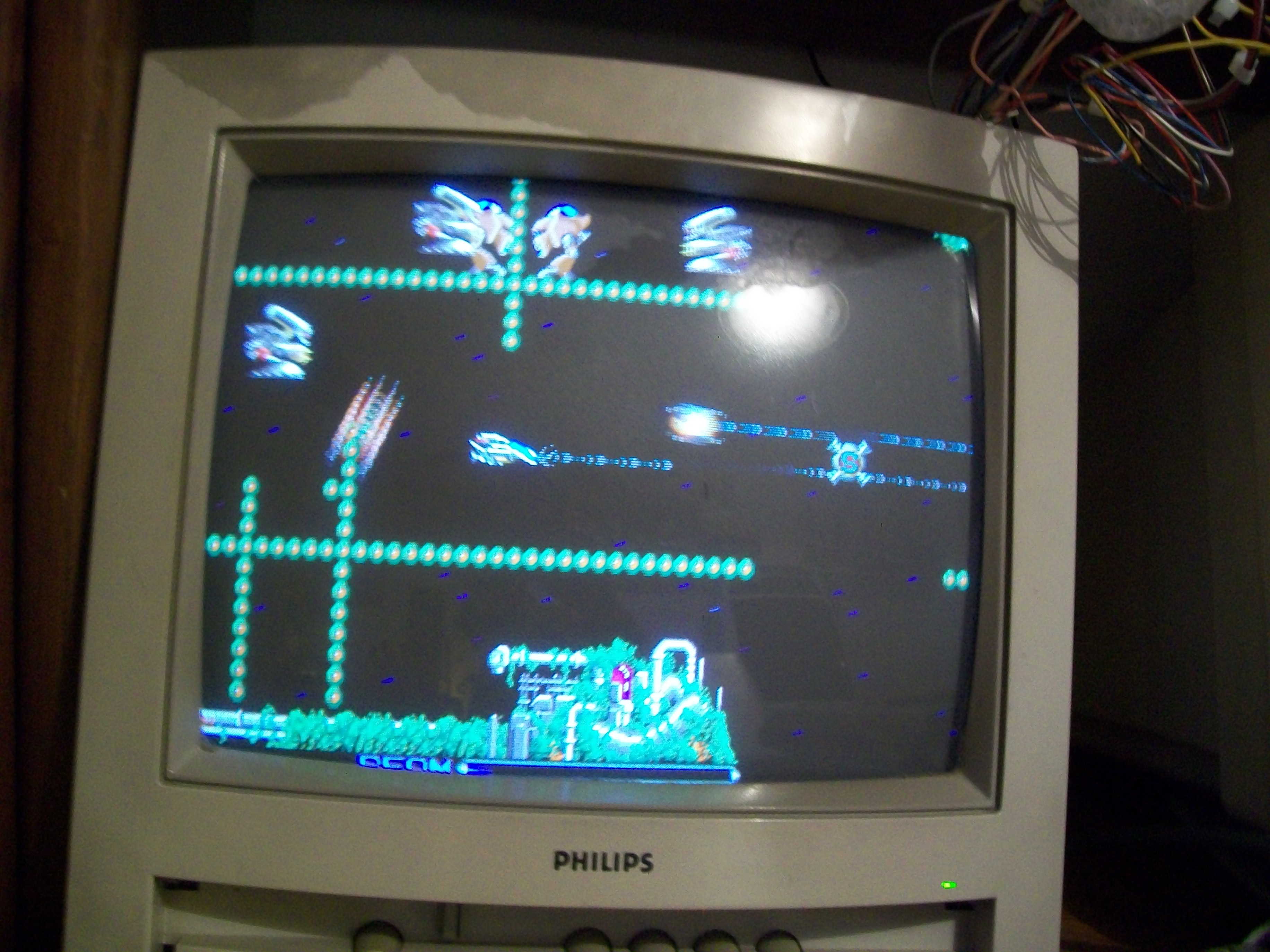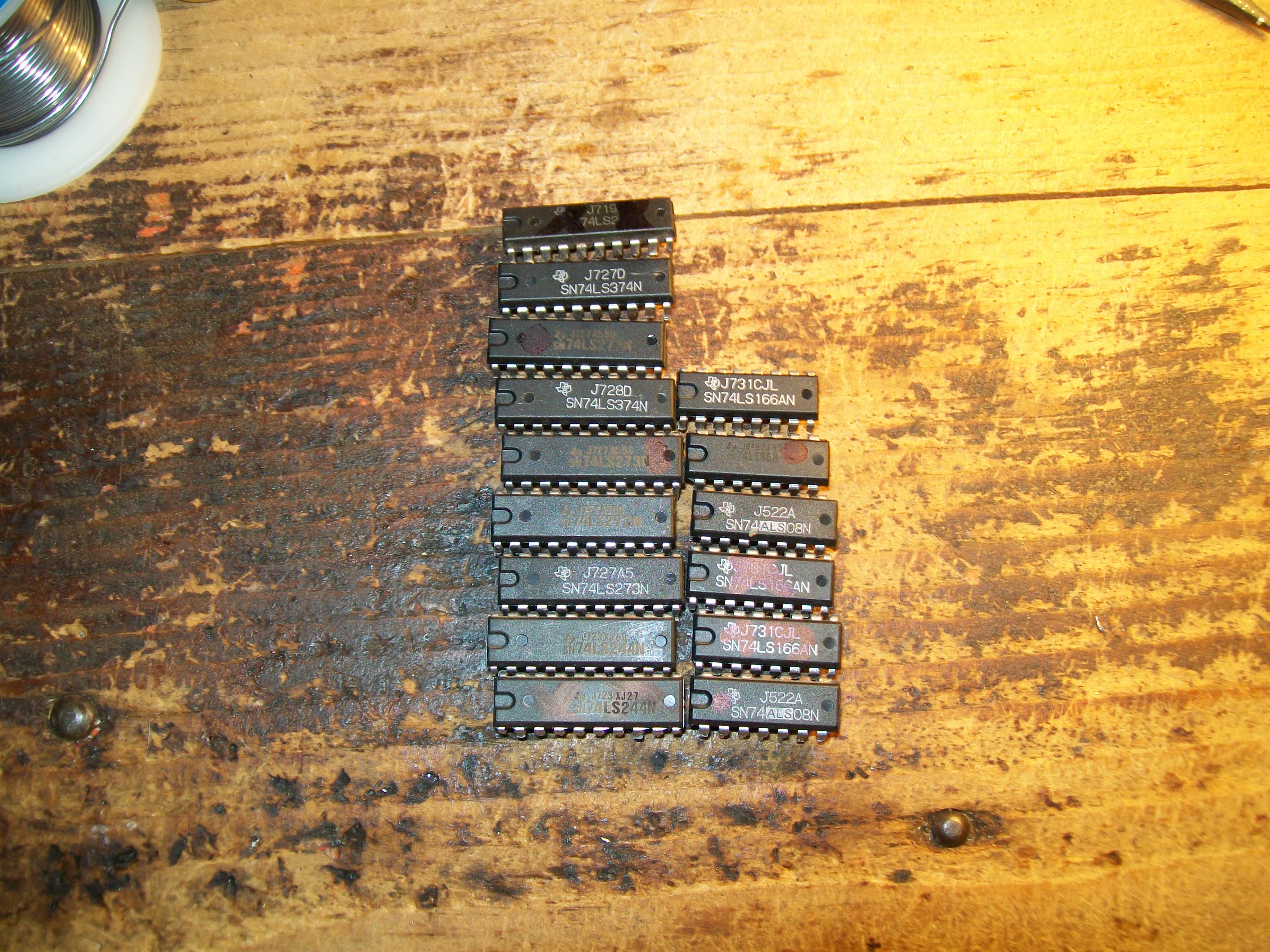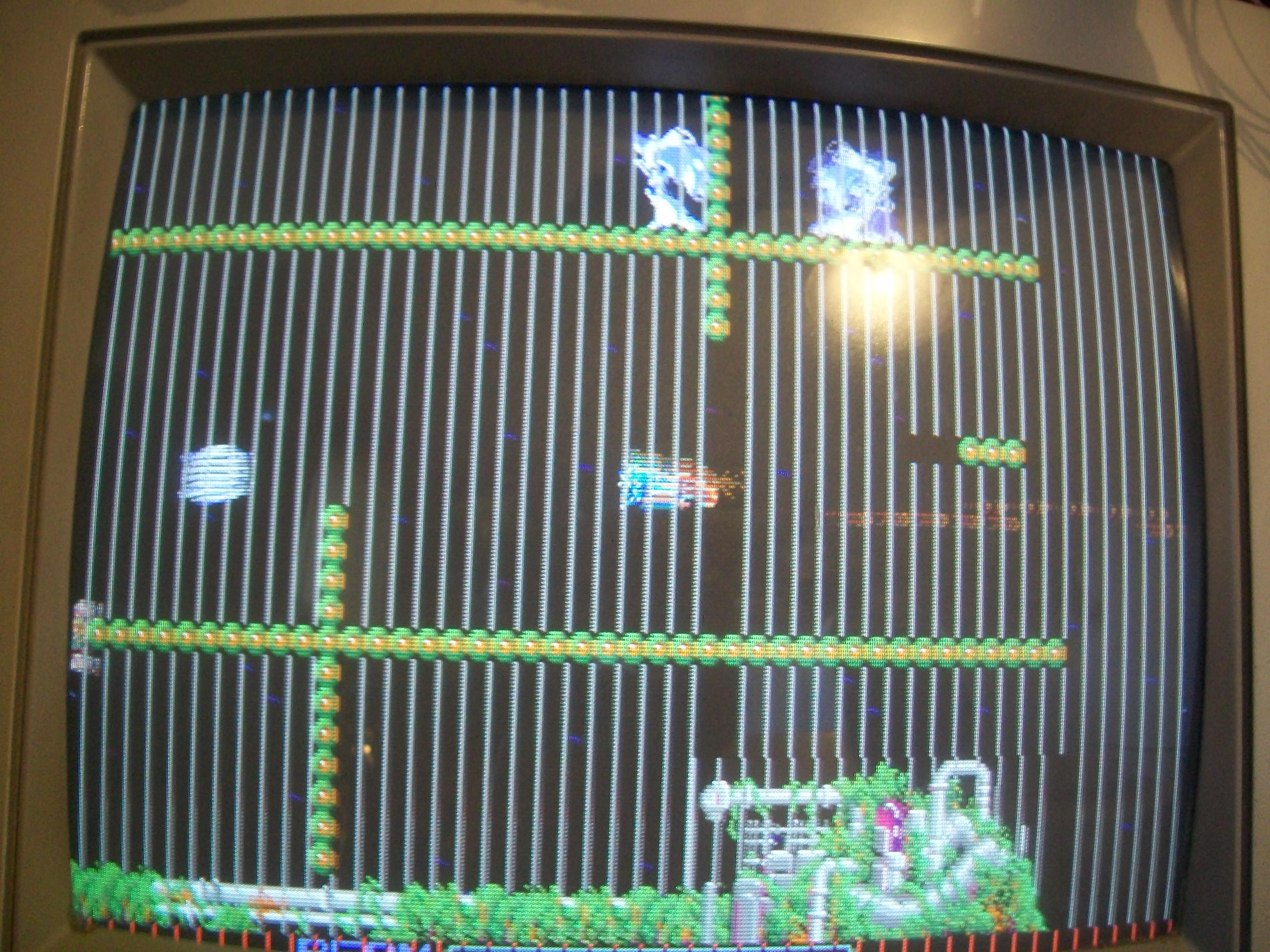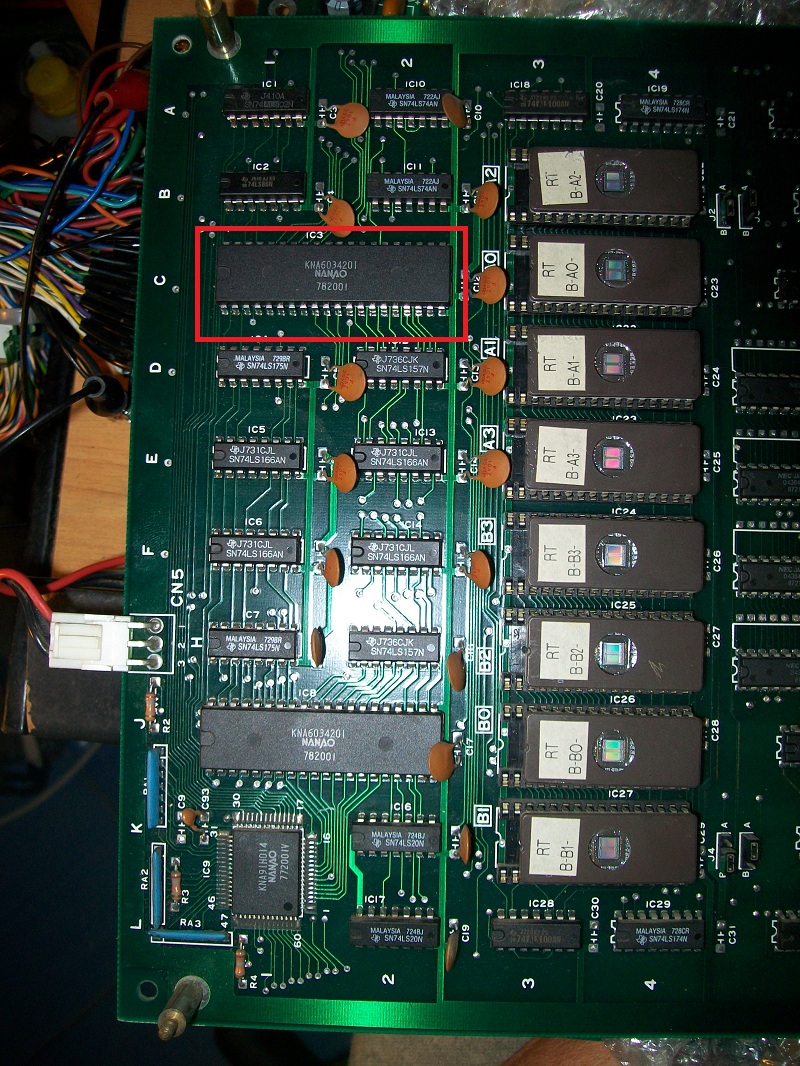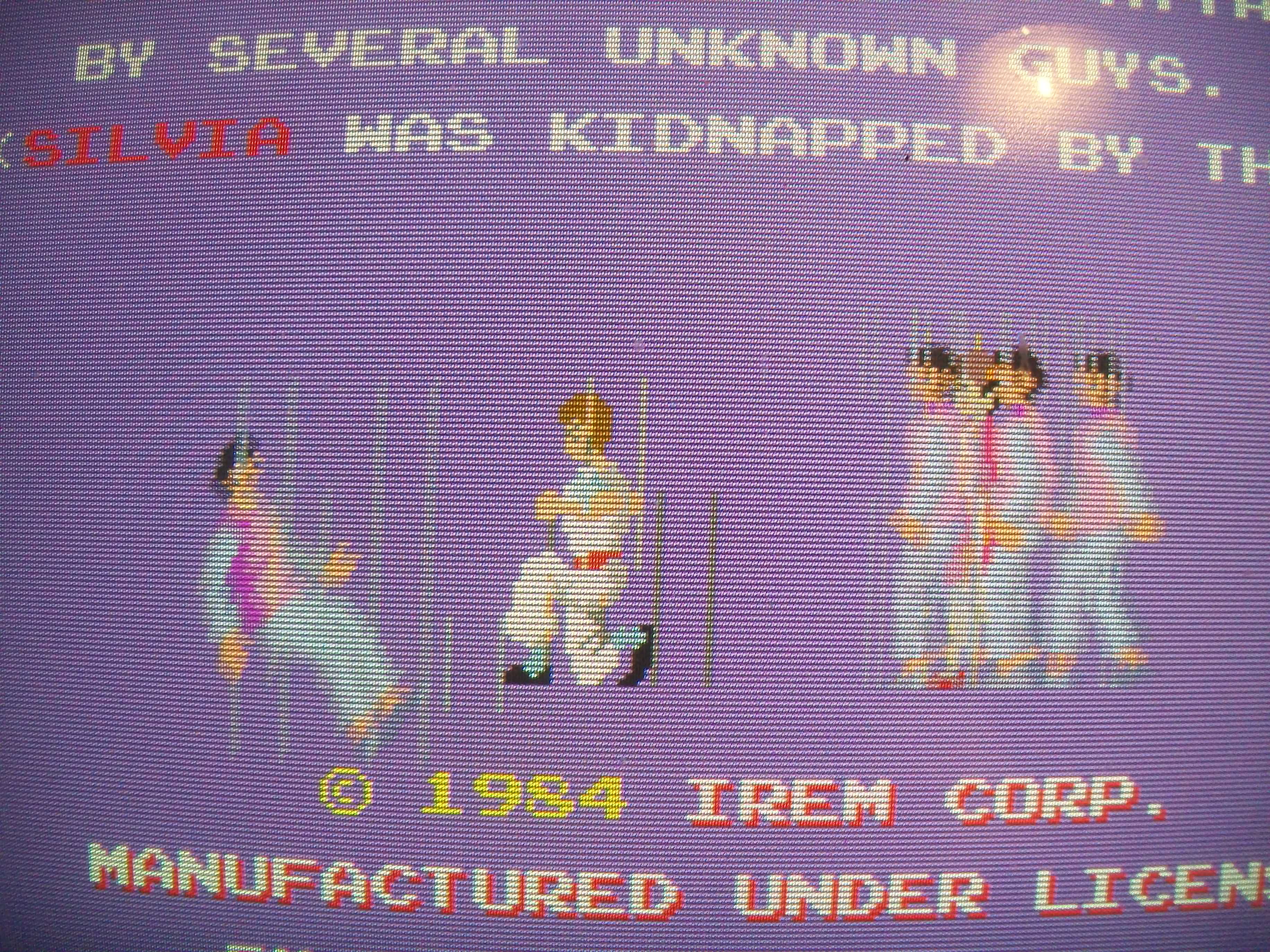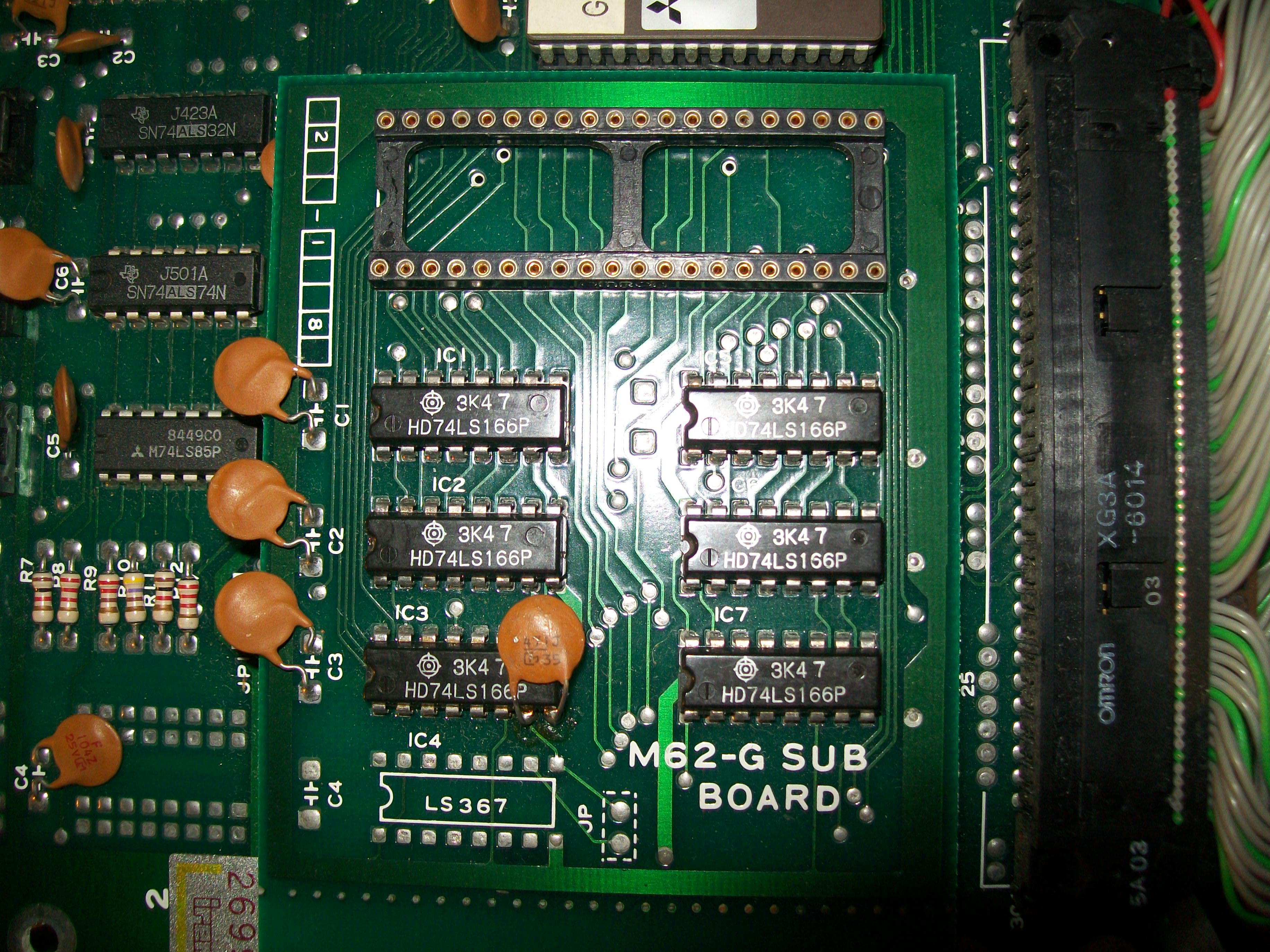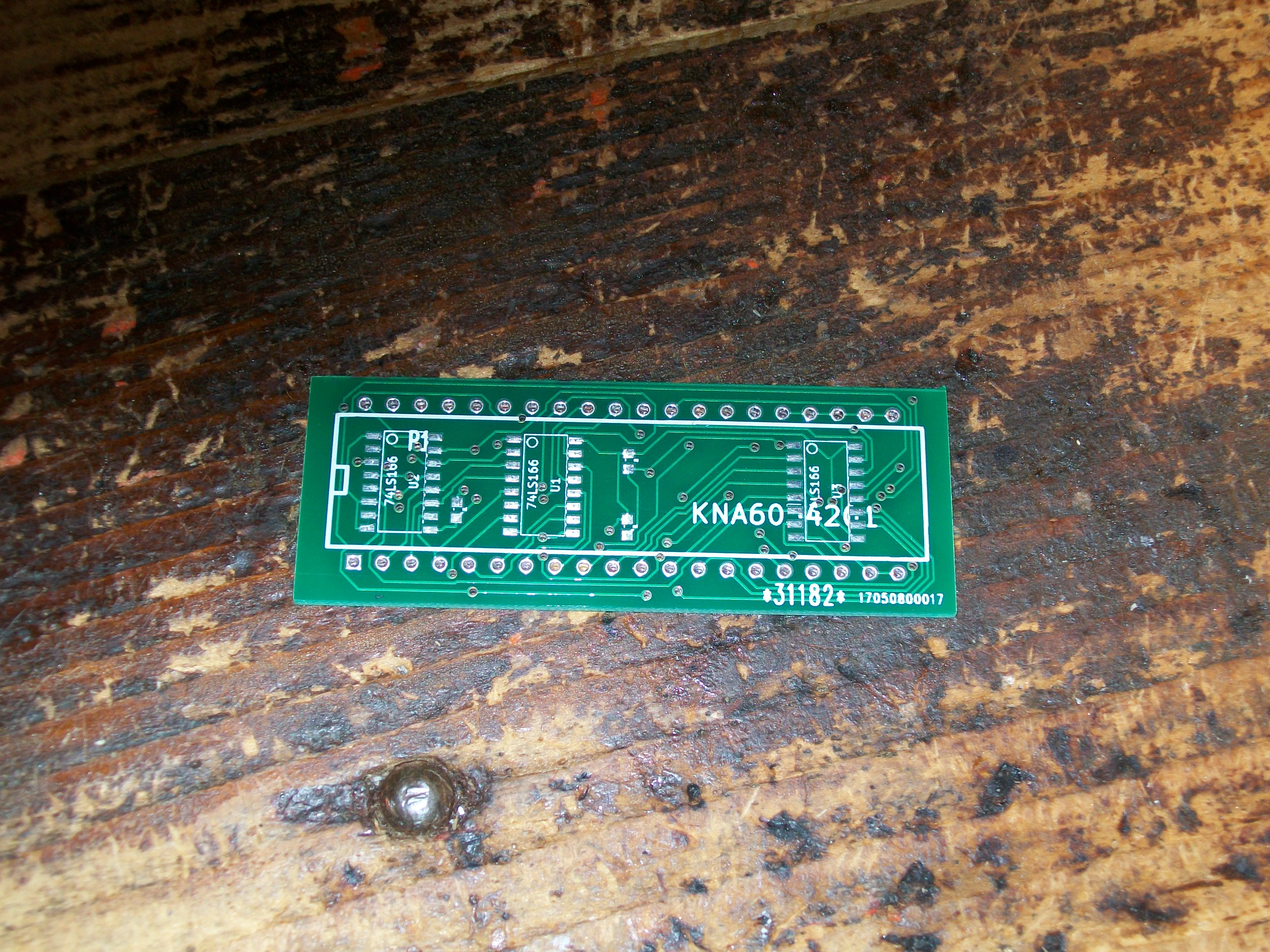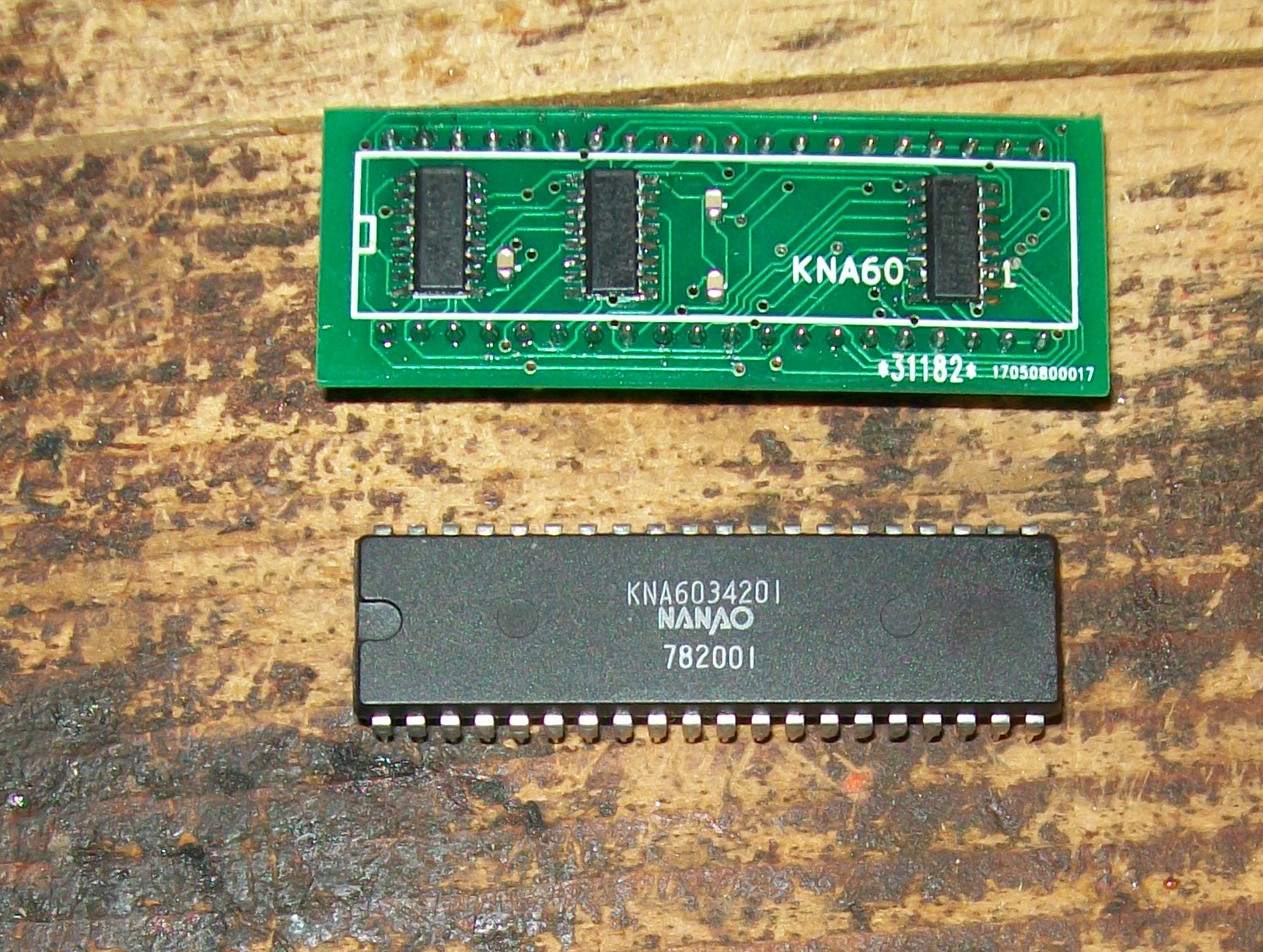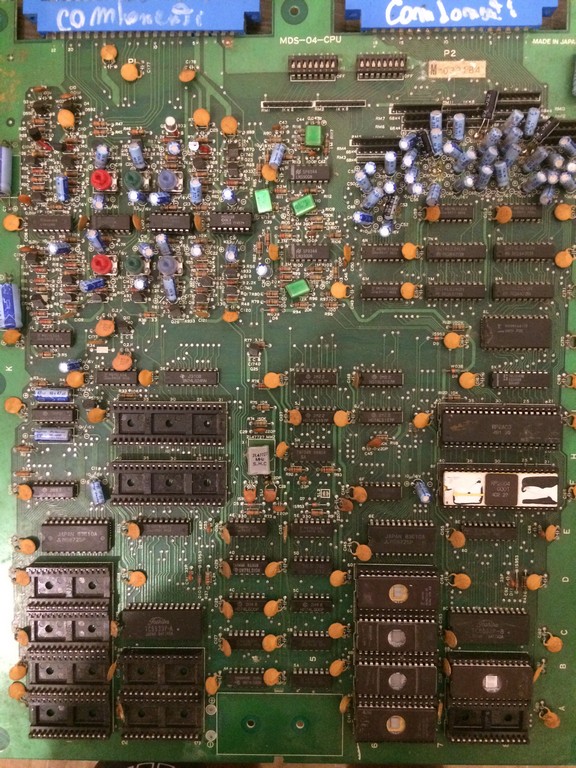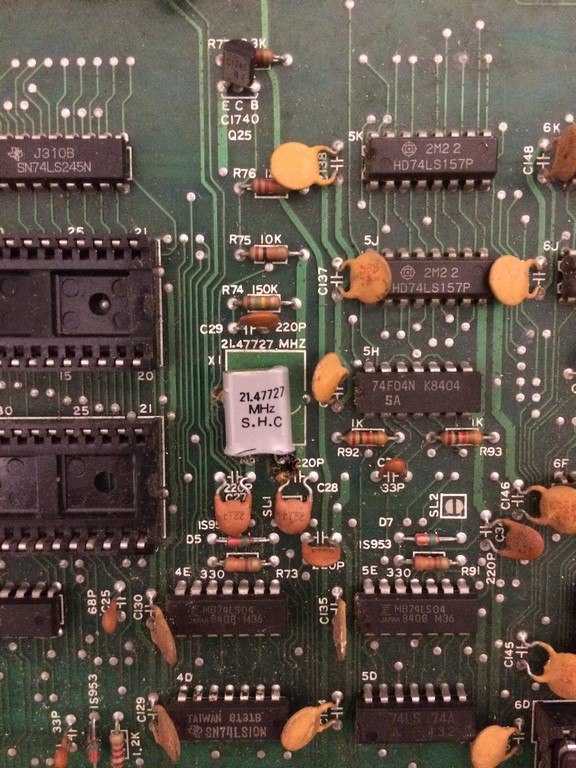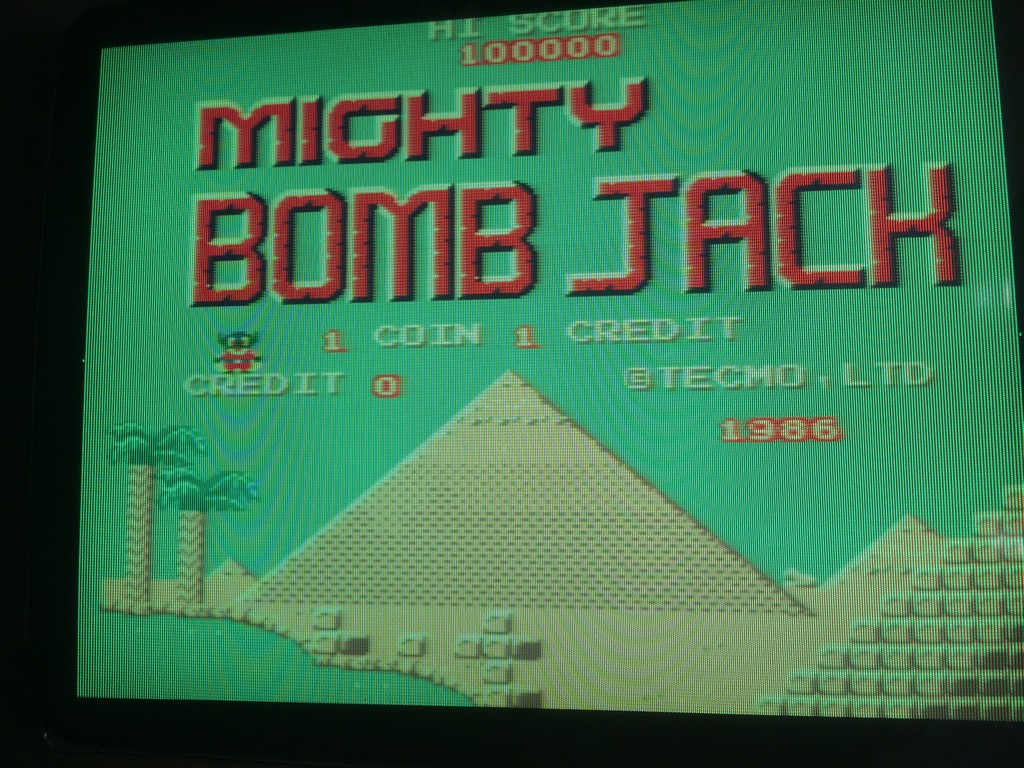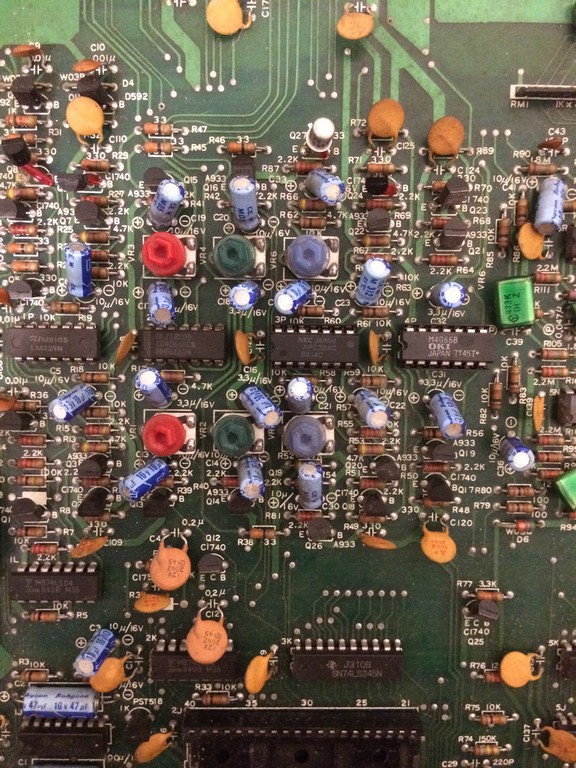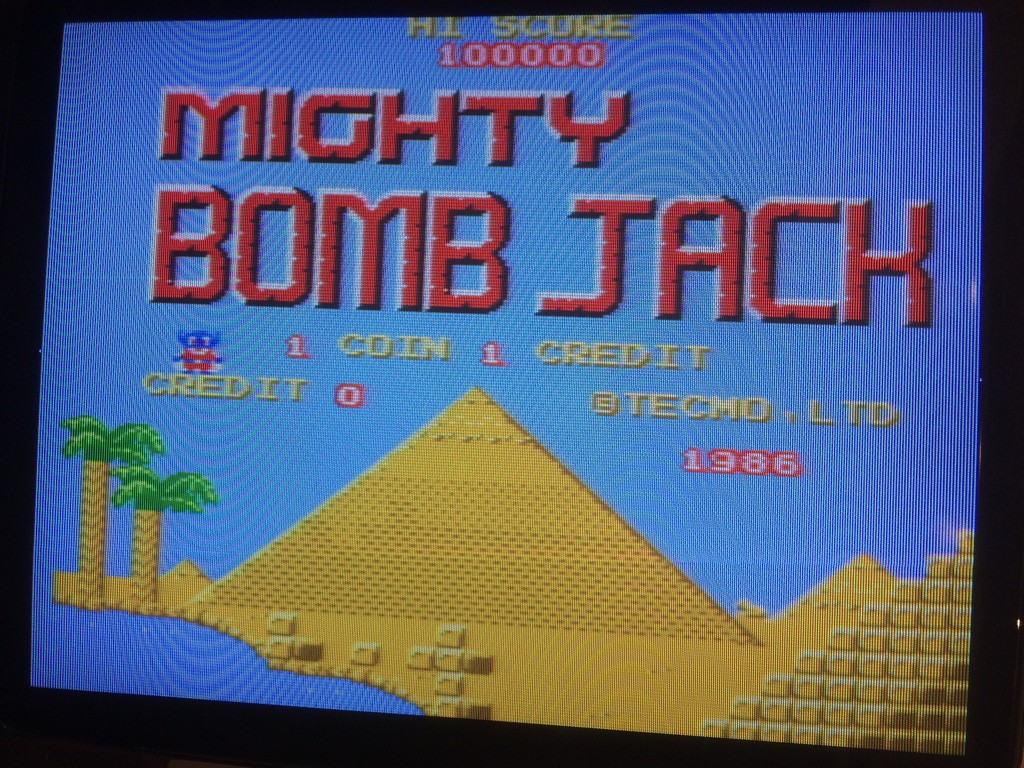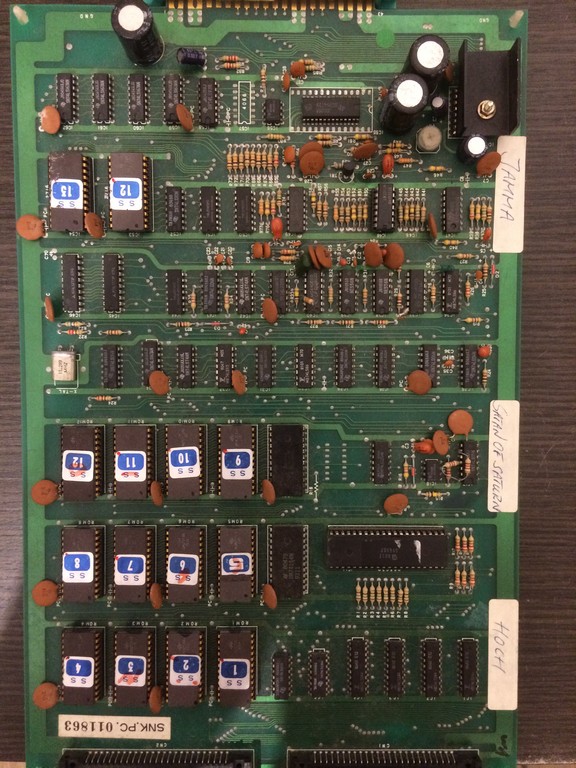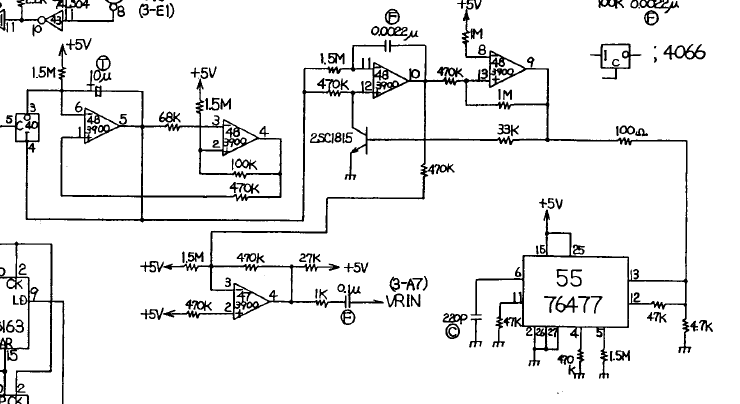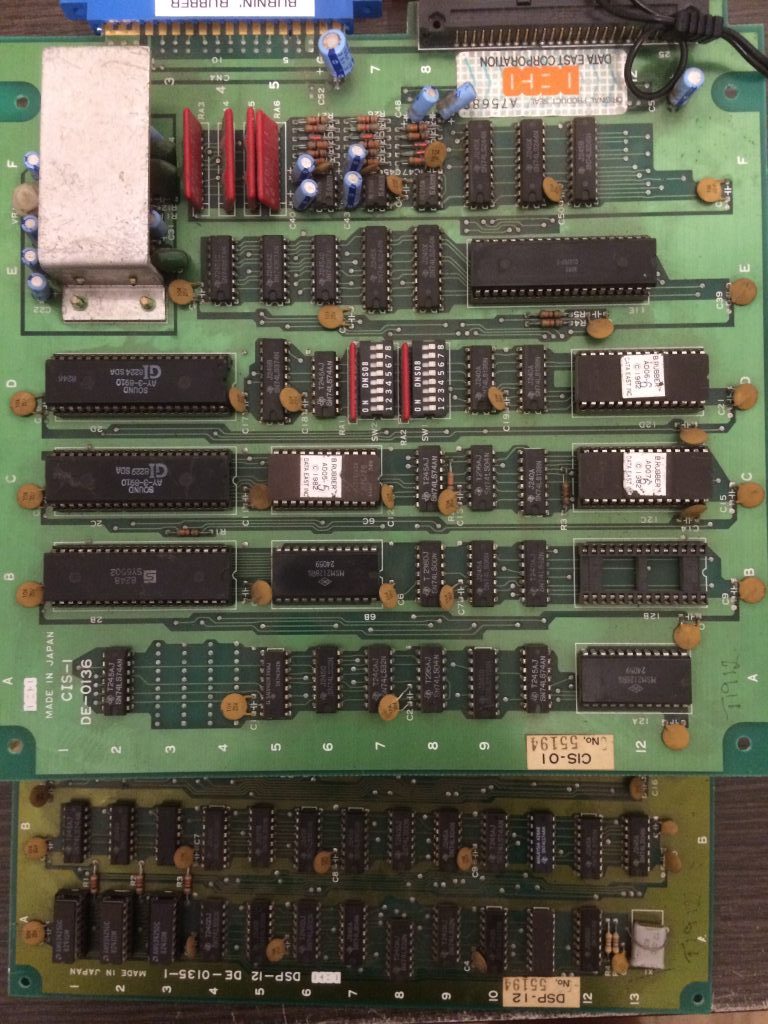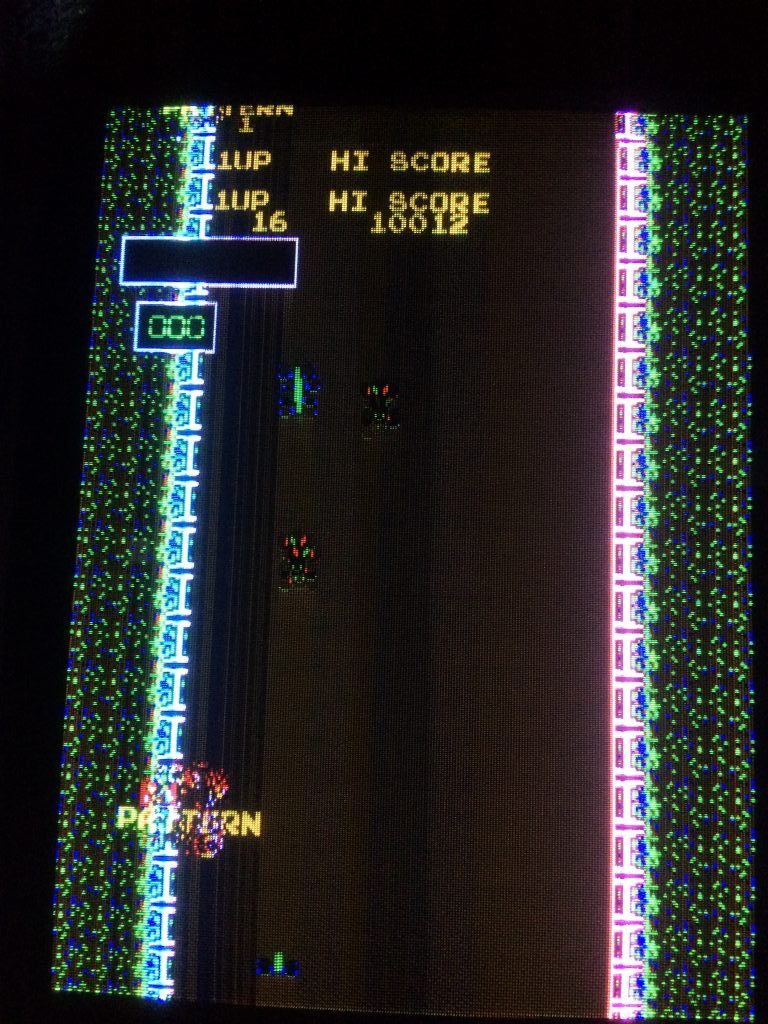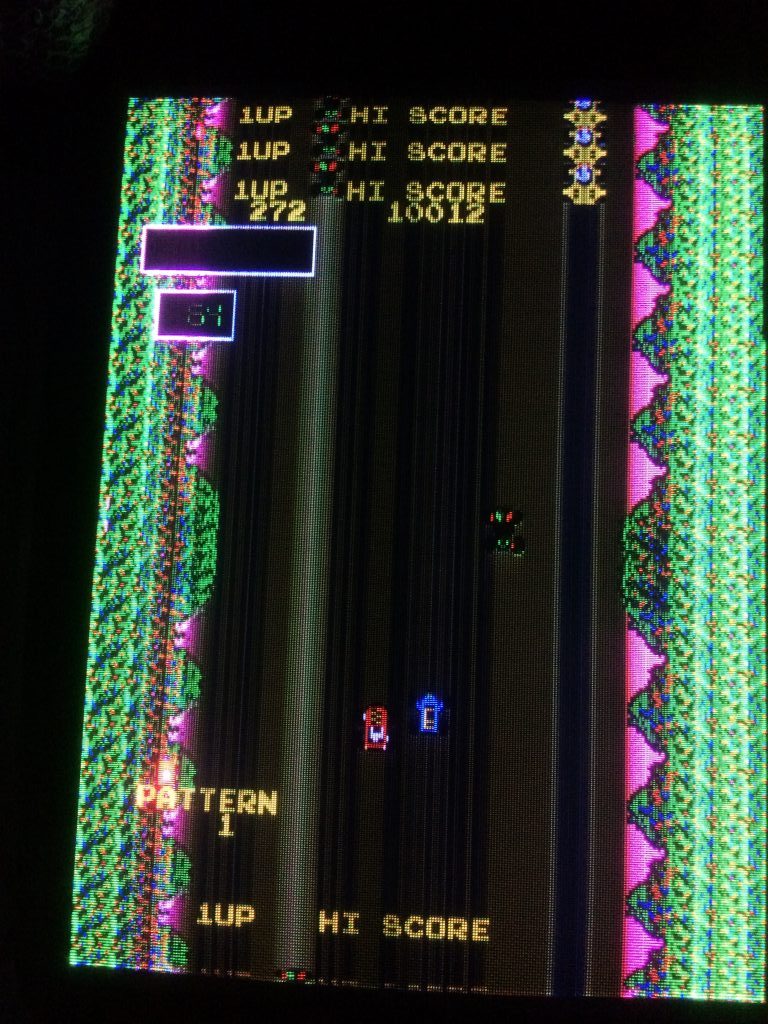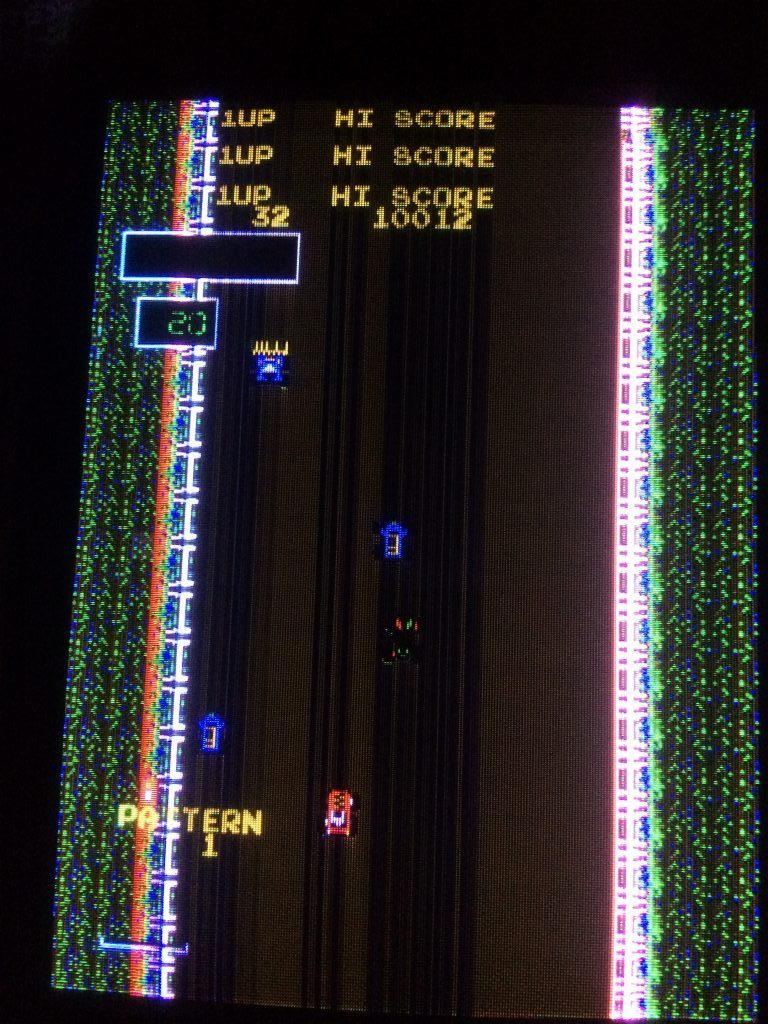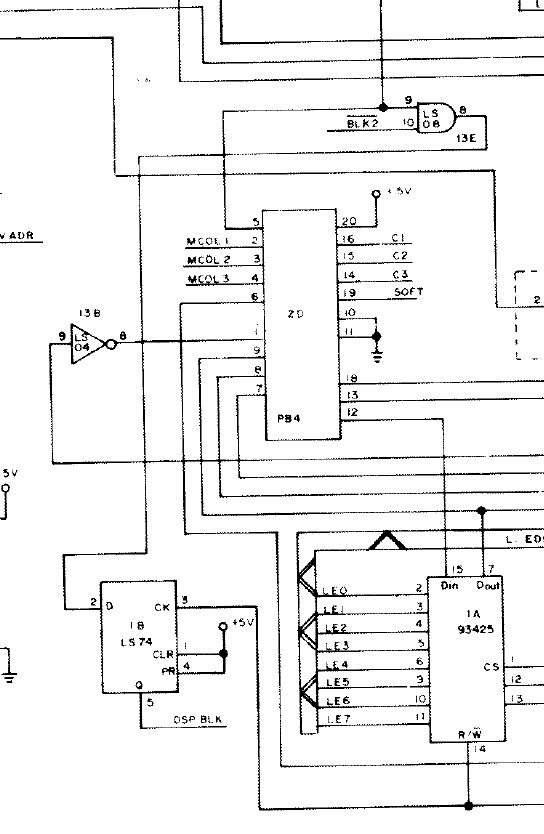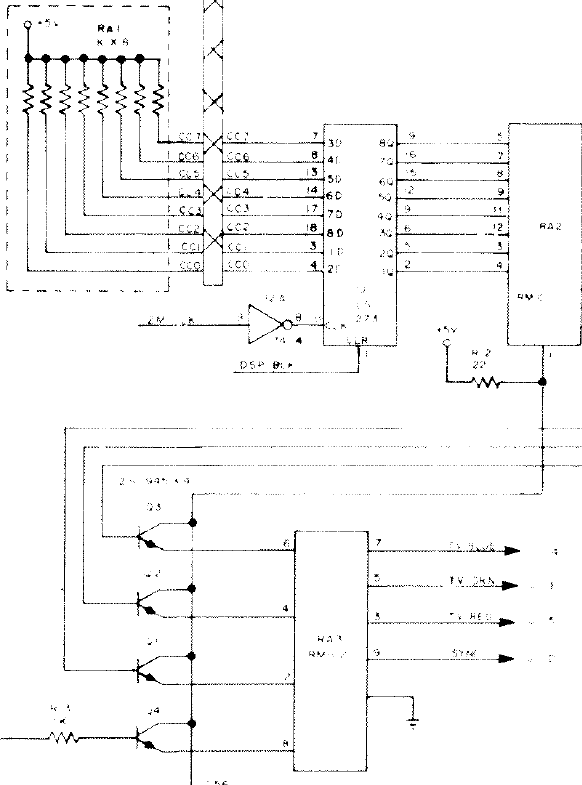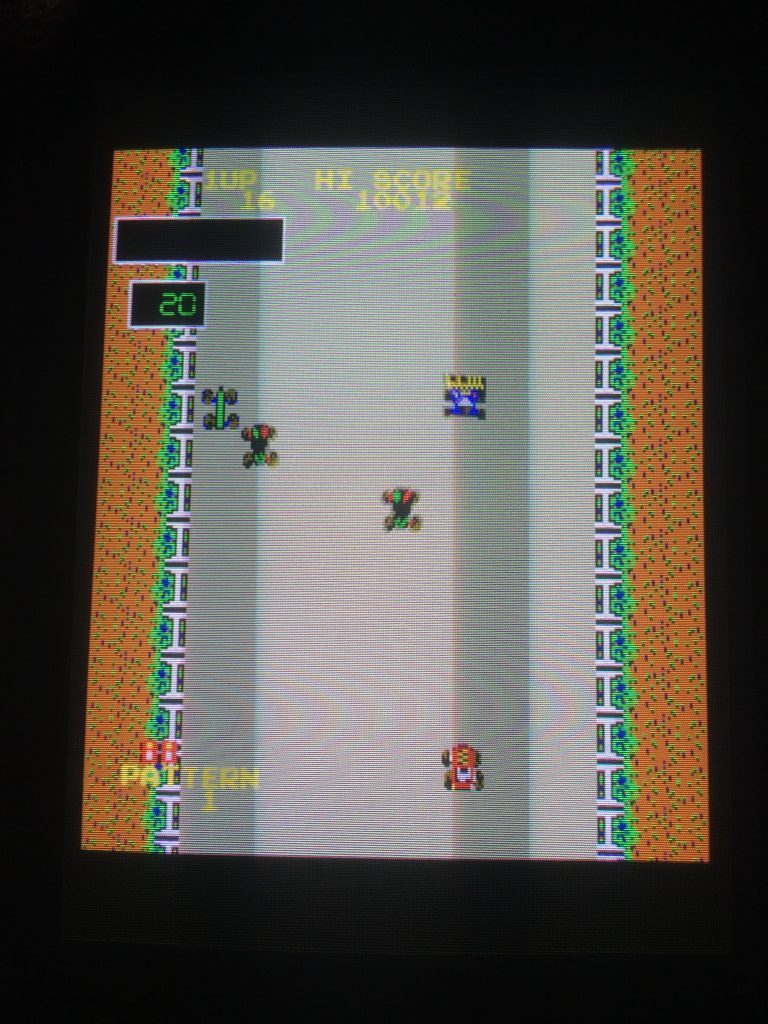These system boards from Namco has a common problem: SMD capacitors
These caps expecially the ones produced in the 90s are very unreliable and sooner or later will start to leak
On my boards there isn’t one that has the ESR in a good range.
On Namco system NA ( Emeraldia, Tinkle Pit, Super World Court) or NB ( Point Blank, Nebulas Ray), the problems you will face are sound related ( low sound or scratchy ), on ND system ( Namco Classic Collections), the SMD caps are used also for the RGB amplifier and in addition you will get colour problems.
I will take as an example a Namco Classic Collection I just finished to repair and which had all the problems coming in about one week of intensive use after a while in storage.
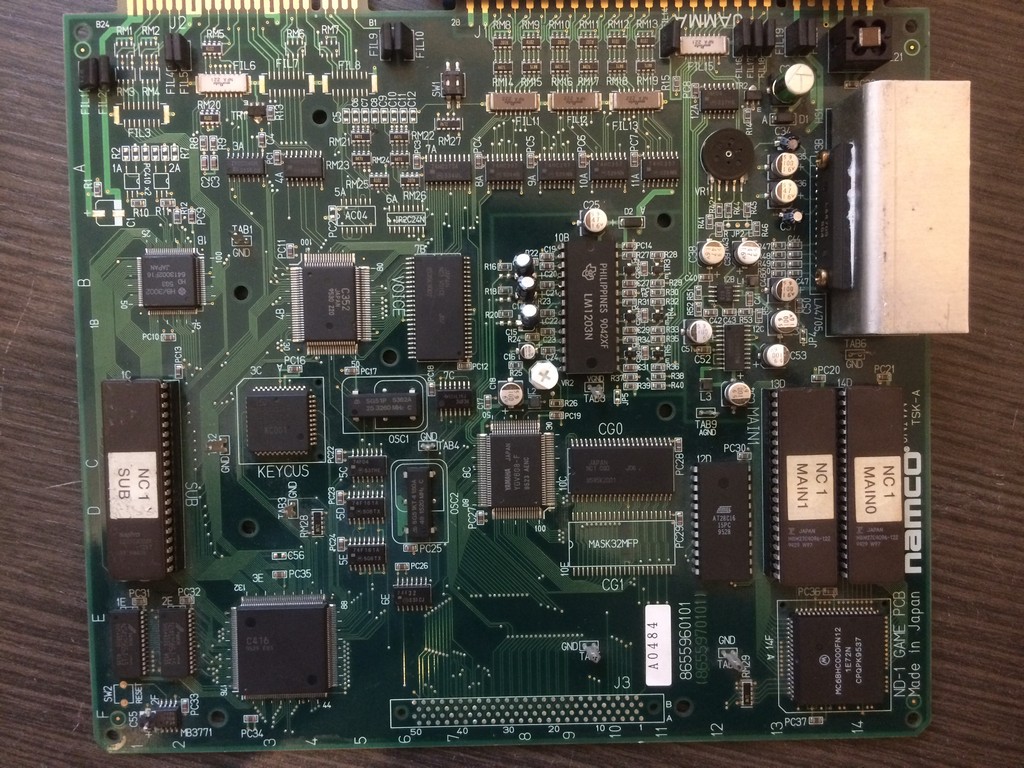
First of all it started to have trails on the RED component of the image.
The system uses a common RGB amplier LM1203 which for example is used on the majority monitors neckboards
Here are the usual circuit taken from the schematics of the LM1203:
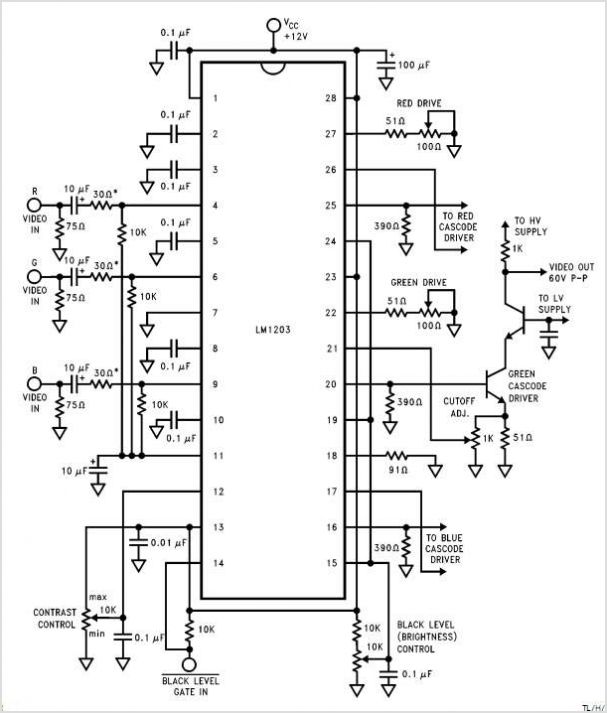
As you can see , on the inputs of each colour component you have to place a 10uF cap.
Namco engineers decided to use a 4,7uF but I tested and there are no differences between the two values.
So, if you have colour quality problems on your Namco Classics Collection pcbs, first thing is to recap the RGB input section using commercial
electrolitic caps.
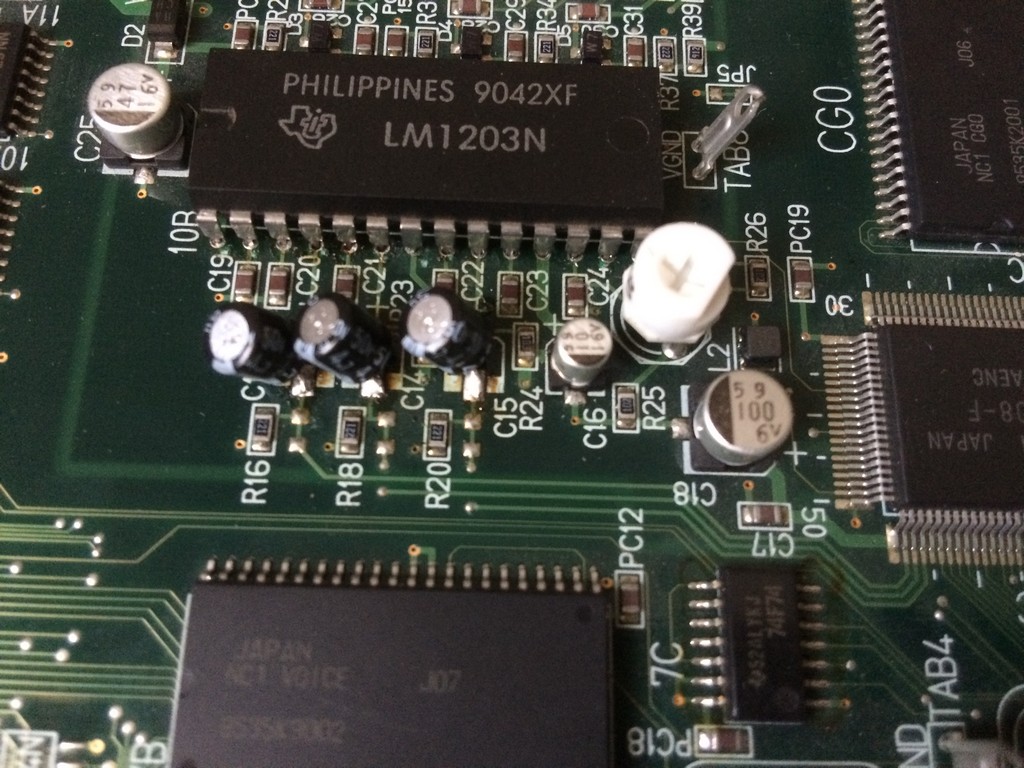
I am not a fan of brute force recap, so with my ESR meter I usually check all the caps and change only the ones that have a very out of range value.
As said before, after few days I get no sound for a while and after about 5 minutes, you could hear it coming up but very scratchy.
The amplifier got also really hot after a short time.
The system uses a LA4705 sound amplifier
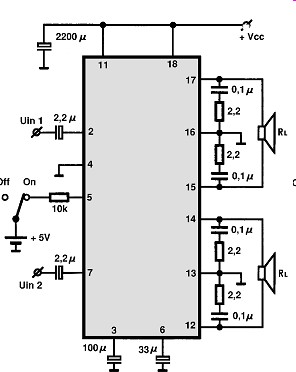
I probed with the ESR meter all the caps and found out the both the small ones 2,2uF placed on IN1 and IN2 had a value of more than 99 ohms.
The other ones also were really not in the specification range but to get sound back it was enough to change the small ones.
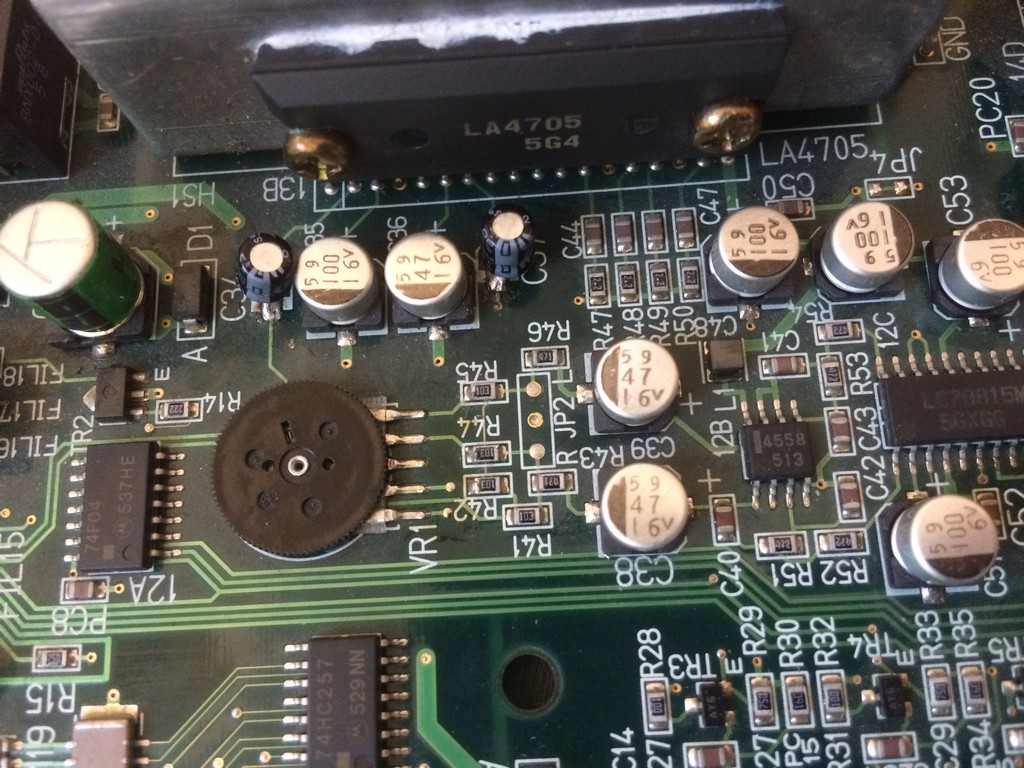
As said the sound section of Namco system NA and NB is the same more or less, therefore if you start to have low sound and you don’t have an ESR meter,
change the 2,2uF, 47uF (33uF on the amp schematics) and 100uF one.


